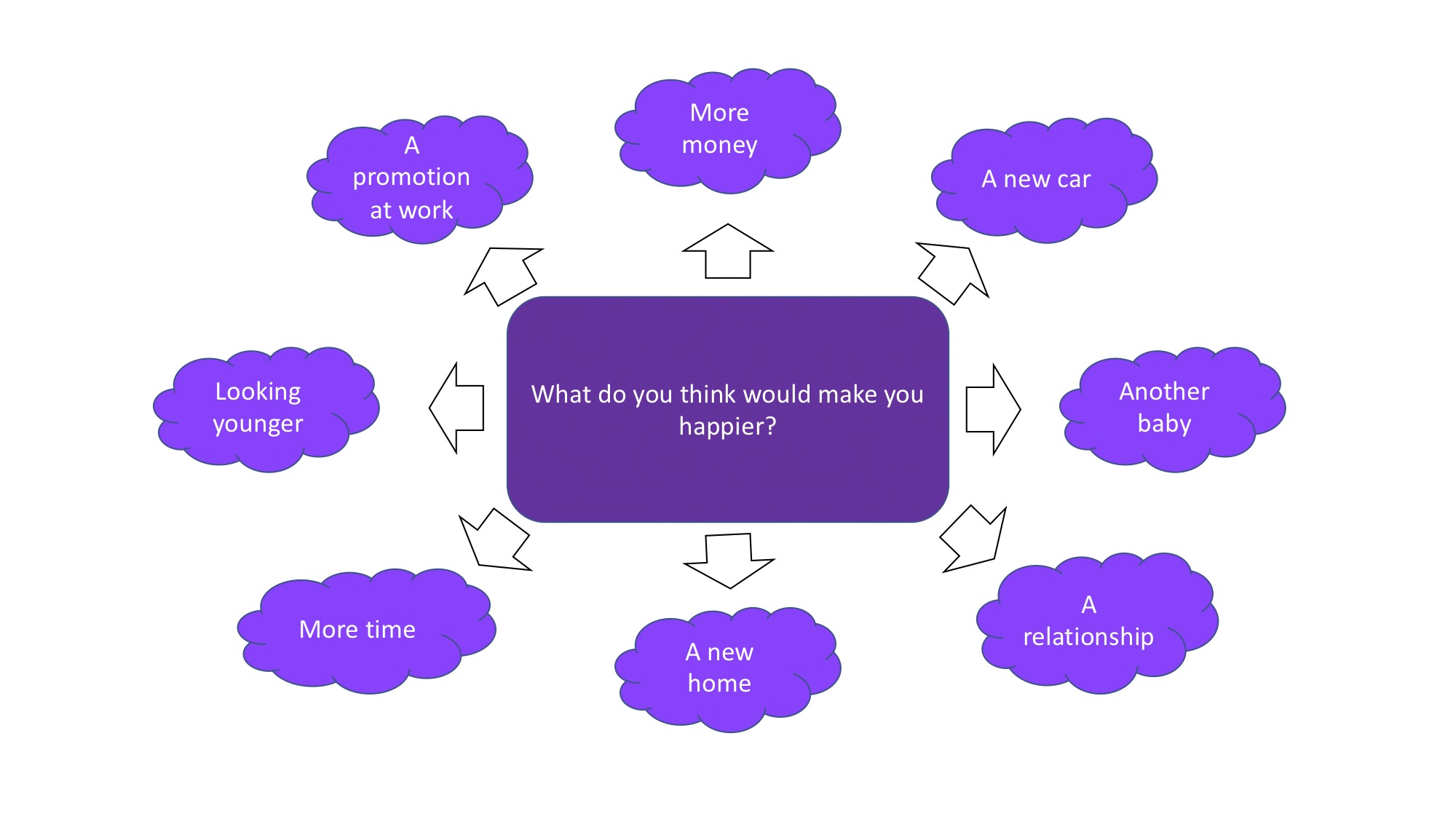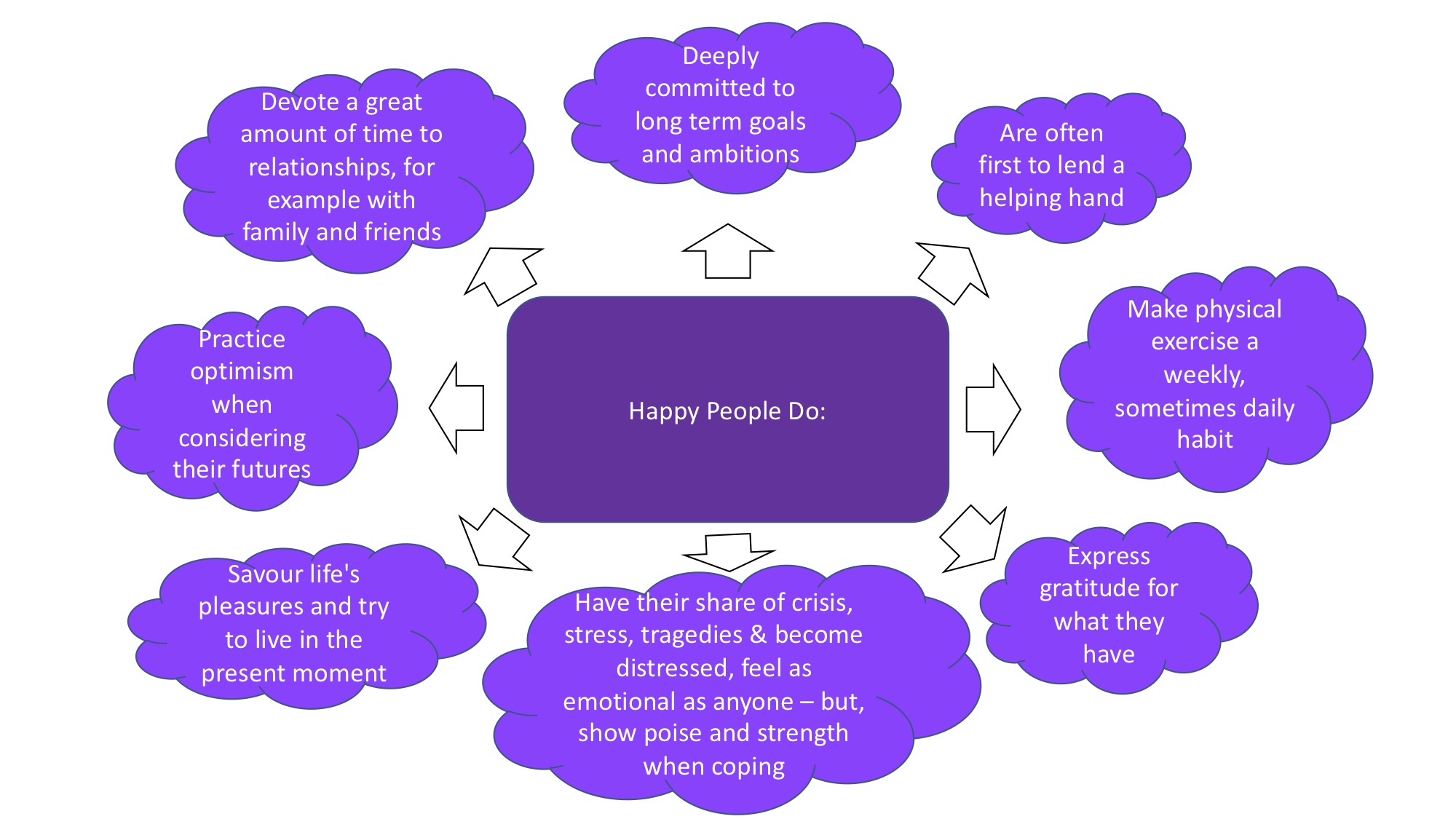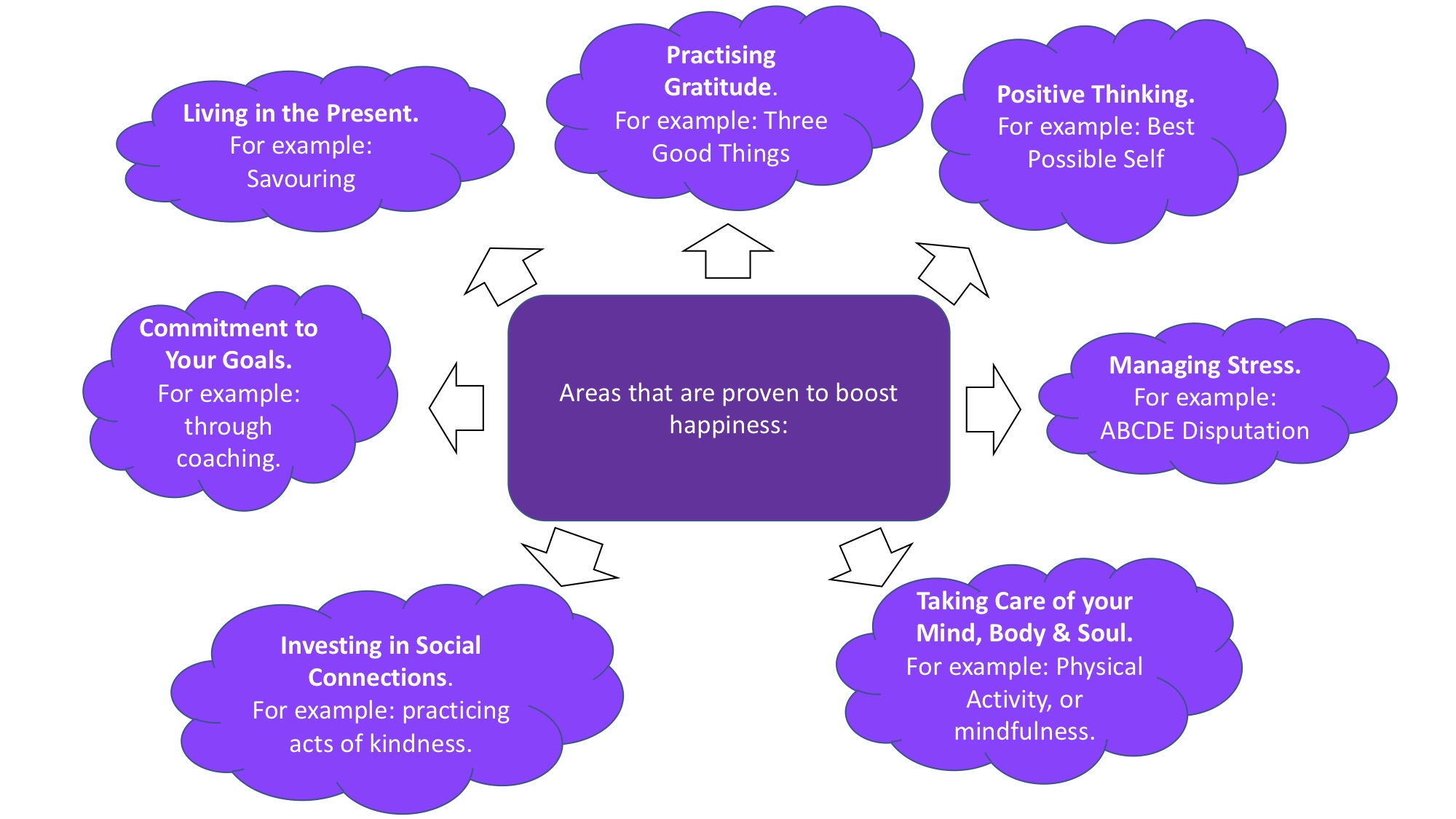Most of us want to be happier.
A 2000 study by Diener, found that 69% of people, from 42 different countries; put happiness, as their top life aspiration. The word “happiness” is everywhere and yet many of us are still unsure exactly what it means and how we can get it.
So, in a year when the whole world has had to pause, be strong and reinvent itself, perhaps going back to the basics with happiness, is more important than ever.
Research suggests that people who are happy are healthier, earn more money, have better relationships and feel more satisfied in their lives. When we feel happy, it’s harder for us to feel fear, depression, anger or anxiety. Happy people feel their life is going well and experience emotions that fit this feeling of satisfaction. Happiness seems cause a domino effect, creating lots more positivity within that person’s life.
Let’s consider for a moment, what do you think makes us happier?

It’s fascinating to think about this question as the truth is so many of us still look for happiness in the wrong places. That doesn’t mean we shouldn’t dream big, or that looking for happiness is a waste of time, even unrealistic. We simply need to recognise the things we can do that will actually make us feel happier. There’s clear benefits in learning how we can be happier, and understanding how could be seen as vital for people who often find themselves feeling depressed or low.
Achieving lasting happiness does not necessarily have to involve digging deep into our childhoods, analysing our relationships, or our past traumas. It also doesn’t mean that we need a bigger house or a promotion and, there’s no need to change our relationship status.
There are approaches we can start right away, which will not only give them us instant ‘happiness boost’ but can also, with a more long-term commitment to happiness, be the start of creating positive lifelong habits.
Of course, when we start out, there will be things that feel strange and new, some interventions may seem overly simplistic (some will seem cliché!); but rest assured this is a natural part of the process. There is absolutely no need to try and use every intervention, rather, it’s a case of having a look and thinking about which ones appeal the most. With repetition and commitment, we can become steadily happier, creating new habits that are self-reinforcing and that become an integral part of we are.
Lyubomirsky developed what she calls the ’40 Percent Solution’. The 40 Percent Solution suggests that we have forty percent influence over our own happiness. Fifty percent of our happiness is how happy we are genetically, the other ten percent is due to our circumstances, areas like health, financial situation, beauty, family and so on.
The suggestion is that every person has forty percent worth of choice. So, each of us may choose to complain, or see the worst in others and focus on scarcity and through this, reduce our own levels of happiness; or, on the other hand we can choose to learn how to think and act in ways that make us feel happier.
There’s not one magic solution to makes everyone happier – we all have different values, beliefs, interests and dispositions. However, there are scientifically recognised areas we can work on, using happiness interventions, awareness and reflection, that will help each of us individually, to raise our levels of happiness.
Lyubomirskys studies found that the happiest people have the following things in common:

For long term effect, it’s important we commit to working on our own happiness, in much the same way we would commit to working out at the gym, or any other important project. Also, the habits we choose, should make us feel motivated to try, and then carry on with those activities, so we can enjoy the end reward of being happier. When choosing happiness interventions, the goal is to find a ‘person-activity’ fit, in other words the activity that fits the person.
One way we can discover how to be happier, is to spend some time figuring out what it is that makes us unhappy. It’s then easy enough to look for interventions that will help us to counteract and build defences against these areas. For example, if we feel easily deflated, we can look for resilience building activities or, if we’ve suffered trauma, activities that will help build coping skills.
Another option is, instead of looking for weaknesses, to start thinking about the things we are good at and, what inspires us? For example, if we are achievement orientated, we could look for activities that involve making and accomplishing goals, or take up a completive sport.
It’s a good idea to think about how the interventions will fit with our lifestyles, so we can choose realistically and appropriately. For example, if time is limited we should pick activities that are easy to include, an example here could be counting the positives; which involves writing down three good things that happened each day, as this is easy to fit in. It’s so important for us to take care to select and tailor happiness interventions to fit our interests and lifestyle.
Below are some areas that influence happiness:

These are some of the ways in which we can start to make a difference to our own happiness. There are so many more ‘happiness interventions’ available, so have a look and figure out what’s best for you.
Heres to getting to happier!!
All the best…


